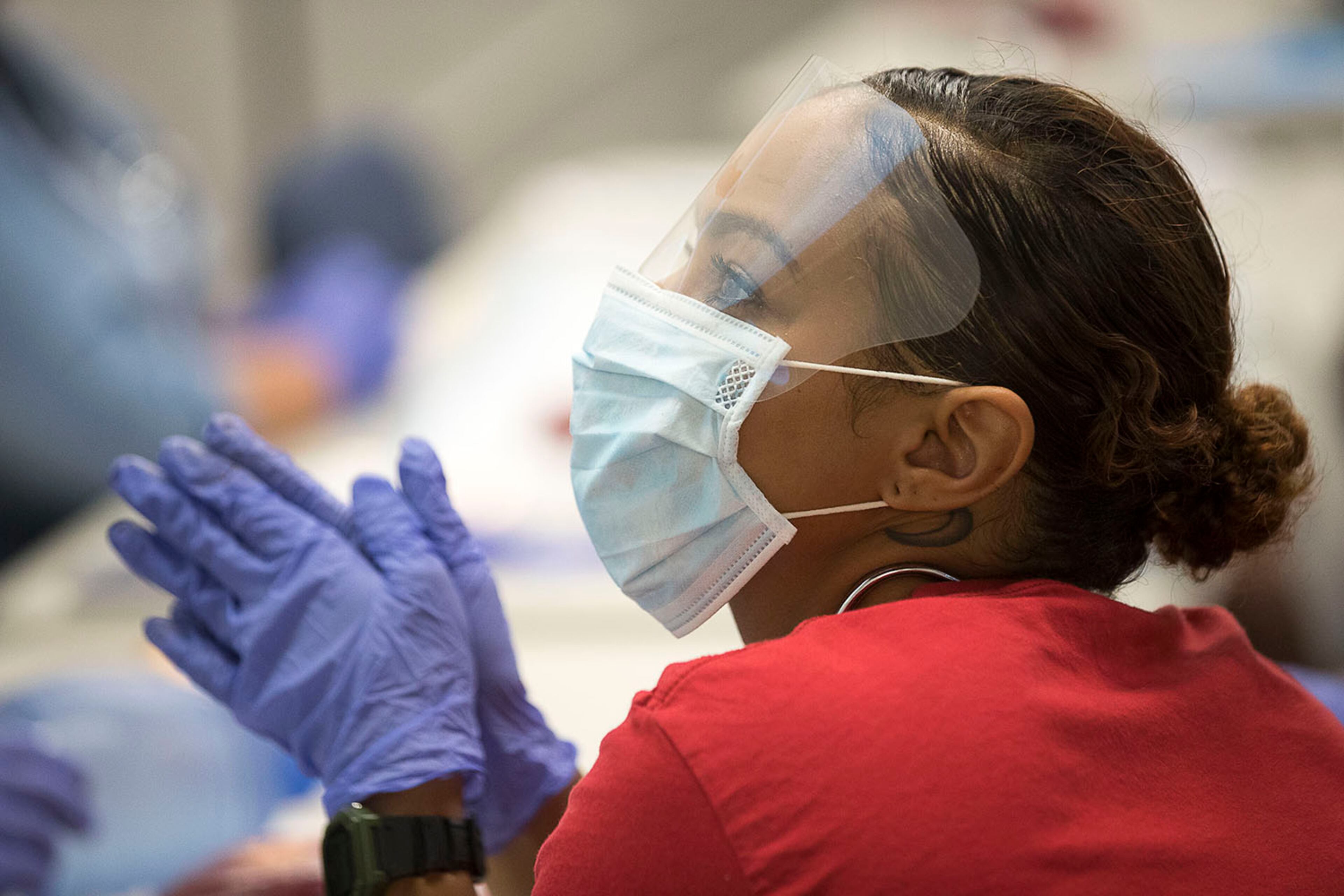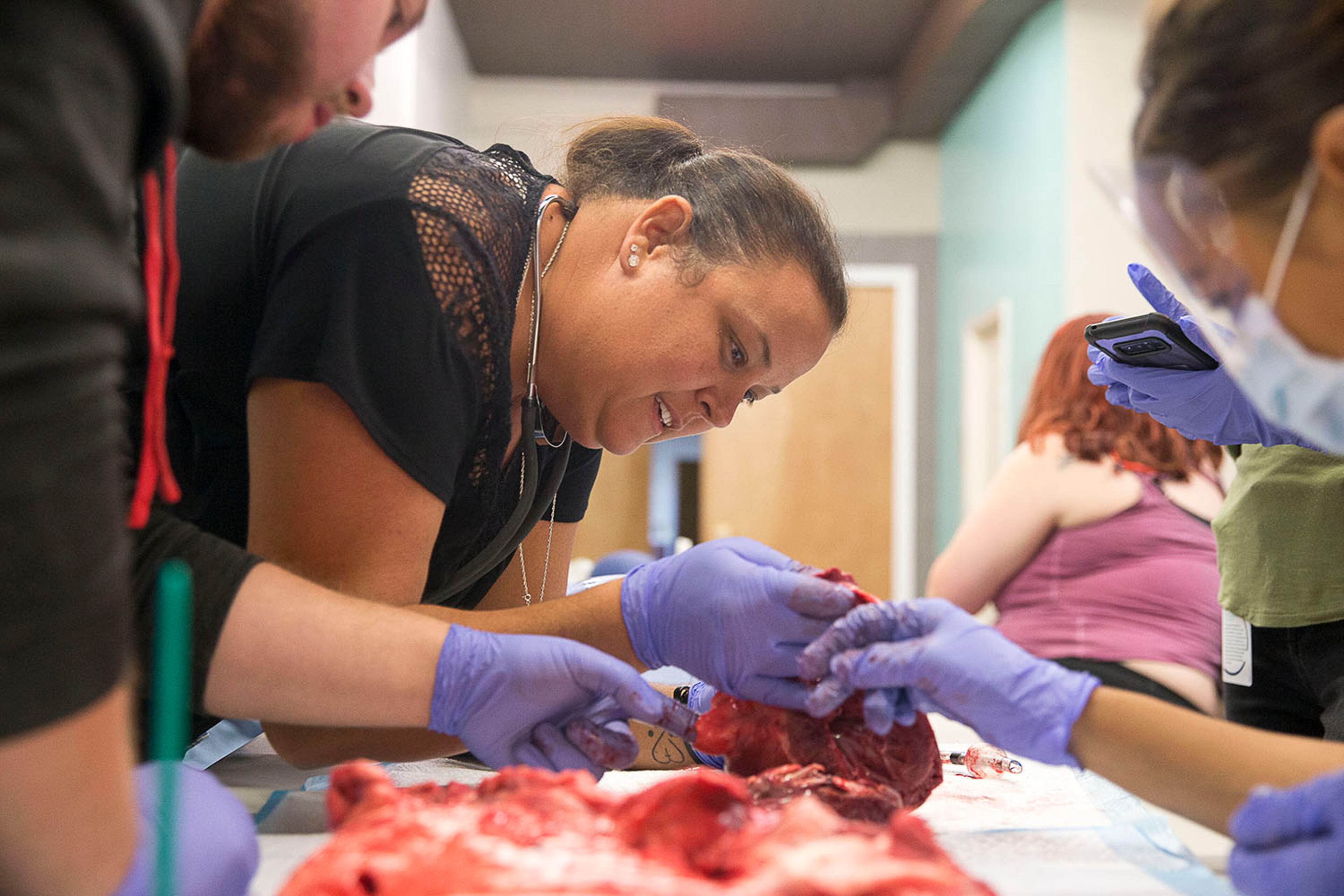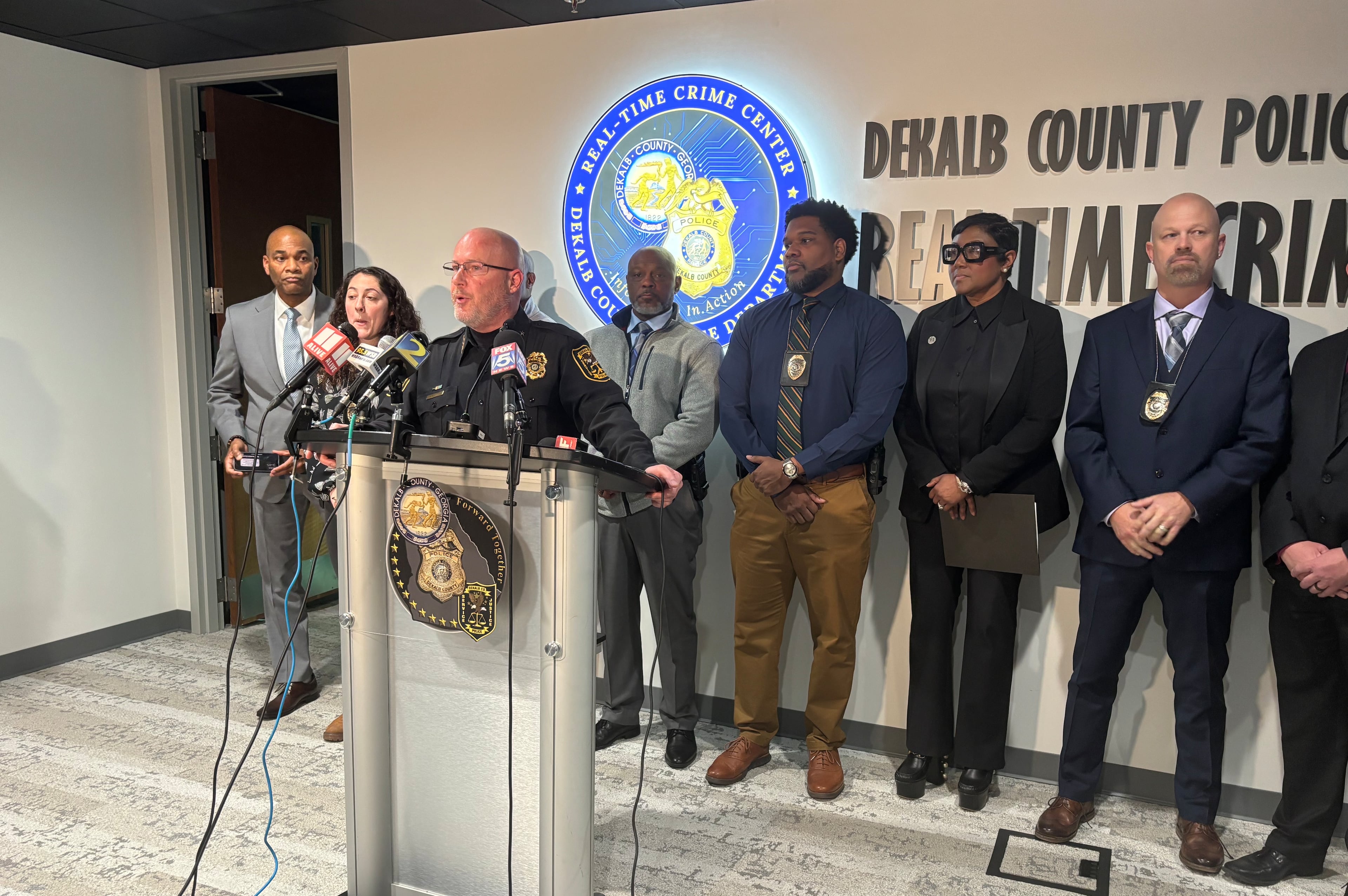State has critical shortage of paramedics












Alex Strickland, a 26-year-old Gainesville paramedic, works a punishing schedule that is dictated by the lights and sirens of an ambulance.
He clocks in at 7 a.m. to begin a 24-hour shift at his first job. Once that’s over, he has a solid hour to clean up, swap uniforms and drive to another 24-hour shift at a second job. He manages to grab cat naps in the low peak hours of his shifts, but the long hours of carrying and lifting patients on stretchers, starting IVs and addressing the overwhelming needs of those in life-threatening situations wear on him.
“There’s definitely been times where I had to take some time off work and get myself back together, after a particularly bad call or two,’’ Strickland told the Atlanta Journal-Constitution. “But it’s never been super terrible for the most part.”
» RELATED: Scant resources undermine EMS in Georgia
Young medics like Strickland are heavily sought after by employers all over the state trying to staff their vehicles with skilled personnel. Georgia is among states experiencing a critical shortage of emergency medical personnel, a problem that raises the risk of harm for patients. While there are shortages of basic, intermediate and advanced medics, particularly scarce are paramedics, the ones with the advanced life support skills necessary to handle the most urgent calls.
"We're getting to a crisis-level of being unable to hire,'' said Chad Black, chairman of the Georgia Association of Emergency Medical Services, which represents the industry with more than 1,600 members statewide. "We've got big issues."
The shortage, EMS officials say, stems in part from the growing pains of an industry at the center of a national push for tougher educational and accreditation standards. Every paramedic school must now be accredited, while the educational requirements for paramedics have been doubled since 2010.

As a result, dozens of paramedic schools have gone out of business because they couldn’t meet the new accreditation standards. And the higher educational requirements have prompted potential paramedic candidates to opt for other careers, because pay hasn’t risen to meet the demands. In Georgia, paramedics may make only $34,000, a salary that ambulance providers say is limited by dwindling governmental subsidies and caps on federal reimbursements rates for Medicare and Medicaid patients.
"The majority of people I started with are now nurses,'' said Charles McFall, a former paramedic captain now an instructor at the Georgia Institute of Emergency Medical Services in Covington.
While Georgia EMS officials say they welcome a focus on raising the bar, some believe the changes have come too abruptly and without a transition strategy.
For example, Georgia has not evaluated its paramedic workforce needs, such as it has done to address the shortage of doctors and nurses. The state is just now developing the technology that will allow it to analyze where paramedics are working, how many may be needed for rescue vehicles and what additional educational programs should be developed.
A lot of work needs to be done to recruit and train enough medics to handle the state's growing number of medical emergencies, said Thomas Woodruff, executive director of Faithful Guardian Training Center, a northeast Georgia-based private school with satellite campuses all over the state.

“It will take us years to be able to satisfy this growing demand if we start working today to start fixing the problems in the industry,” Woodruff said.
Some fear it will take longer than that to address the shortage because additional educational requirements and accreditation standards are looming.
In August, the National Association of EMS Educators and others recommended that entry-level paramedics obtain a two-year college degree. That would eliminate programs that aren't offered through a college or university.
The nation’s top three associations of firefighters and fire chiefs say the proposal would shutter 20 percent of existing paramedic education programs in the U.S. and worsen the paramedic shortage.
“We are terrified,’’ said Courtney Terwilliger, EMS director in Emanuel County. “We want to make sure the programs are doing the right thing, but my problem, at the moment, is that we will have less medics.”
Other states have already announced that they would adopt the standard. North Carolina plans to do so by 2021.
Georgia has no immediate plan to adopt, Woodruff said, “but it’s inevitable.”

Trauma and stress
Even if paramedics obtain college degrees, EMS officials say it may be years before that results in higher pay.
Already, too many medics at all levels work excessive hours to make ends meet. Some double up on jobs and overtime. Even those without a second job work long hours — most ambulance services require medics to stay an additional two hours at the end of their shifts if there is not an adequate number of other medics available to replace them.
Job fatigue can put the public at greater risk of harm.
The number of crashes involving ambulances has been climbing in recent years. The Georgia Department of Transportation reported more than 630 crashes last year, compared to half that amount just five years ago. While the increase may largely reflect the increase of vehicles on the road as the state’s population has grown and the recession eased, Black says a part of that can be attributed to overworked medics.
“Would you want your loved one to be taken care of at 4 o’clock in the morning by a medic who hasn’t slept for hours?’’ he said. “And, there are lots of concerns with the fatigue factor and the amount of wrecks that we’re seeing.”

There are no state rules requiring medics to have eight-hour sleep between shifts.
In June 2017, a medic in Floyd County fell asleep while she was transporting a patient to the hospital, killing the patient and injuring her partner. She suffered injuries, including a broken pelvis, and lost a five-week pregnancy.
"She was working extreme hours,'' McCracken Poston, her attorney, told the AJC. "She was not caffeinated, which was her usual method to keep going, because she was pregnant."
She was arrested and charged with various offenses, including vehicular homicide, but a jury ultimately found her guilty of failure to maintain a lane. She was fined $84.
Job fatique and the physical and mental stress of dealing with life-or-death sitautions also put the medics at risk, driving some from the occupation.
McFall, the former paramedic, said he looked for another job in 2006 because he couldn’t take the endless work hours and the constant stress. The father of four also ended up filing for bankruptcy because he couldn’t support his family on his paramedic’s salary of $10.25 an hour. He ended up getting a desk job as a cardiac tech who interpreted heart rhythms of patients with portable monitors. He said it was his first steady paycheck. He didn’t have to work all the time and he could see his family.

“I was working on a truck some crazy hours, being up all night,’’ he said. “I went from that to a steady paycheck, regular hours, no pay drops, overtime and benefits.
“It was the best pay I’d ever gotten in my life.”
Michael Flynn, a 15-year paramedic in the Atlanta area, said many of his peers depend on caffeine to stay awake because they have to push themselves to work many hours. Many don’t talk about the emotional toll of the job because it is not a welcome topic of conversation.
“There’s a lot of ‘talk’ about mental health but it’s closer to what you see in the military,” Flynn said. “You really don’t talk about it.”
Woodruff, the northeast Georgia educator who himself is a former paramedic, said he is aware of the suicides of at least two medics in recent weeks. That’s not extraordinary, Woodruff said. “It’s almost every couple of months to hear it happen in our industry.
“We are very concerned about mental health.”
Amy Howard, a paramedic in east central Georgia, said concerns about mental health aren’t any different in rural communities.
“You see some things that are very disturbing,” said Howard, who works in Wilkes County. “I’ve known paramedics who have seen accidents in which multiple patients were deceased.
“After that, they were never the same and left EMS altogether.”
Addressing the shortages
Georgia EMS officials, like those in other states, are exploring ways to address the shortage.
Private ambulance services and fire departments that offer bonuses, more pay and educational incentives have been able to fill more vacancies. Some pay for paramedic training for employees who agree to stay a minimum of two years.

Another strategy, which has been successful in Seattle, is to dispatch a paramedic to only the most critical calls, such as those involving cardiac arrest, stroke and trauma. The agency, which tops pay for paramedics at more than $76,000, has one of the nation’s best survival rates for patients suffering cardiac arrest.
In the Atlanta area, DeKalb County set out last year to manage its emergency medical resources more efficiently. To accomplish that, the county seeks to deliver priority medical attention to patients who reported signs of more life-threatening conditions.
The county also depends on first responders in fire trucks, which are stationed across the region, to run medics to emergency scenes before ambulances can arrive. In DeKalb, firefighters are required to be certified as medics, DeKalb County Commissioner Nancy Jester said. That ensures that a medic is among the first to arrive.
“It’s not when the ambulance arrives but when the medical care arrives on the scene,” she said.
Black, the EMS association chairman who is EMS director for Habersham County in northeastern Georgia, said a discretionary approach about resources makes sense.
But many communities in Georgia would not be able to afford new equipment and staff to run a response system based on the severity of a call, he said. Communities would have to establish a call center of dispatchers who can properly assess symptoms of patients, then make an appropriate decision about what resources to send to the scene.
The practice also undermines what many Georgia EMS directors believe is the proper way to ensure the best outcome for patients — to place at least one paramedic on every fire truck and ambulance.
“You have to do what meets your community’s needs,” Black said. “Every community in Georgia does EMS differently.”

A snapshot of the EMS industry
In 2018, the U.S. reported a total of 262,100 jobs for emergency medical technicians and paramedics. These medics respond to emergency calls, perform medical services, and transport patients to hospitals.
The occupation is one of the nation’s fastest growing, with 18,700 jobs added in 2018. From 2018 to 2028, it was expected to grow 7% a year.
Georgia has about 9,590 EMTs and paramedics.
Currently, the data doesn’t provide a breakdown for how many EMTs and paramedics ride on ambulances compared to those who are employed by fire departments, hospitals and physician offices.
The National Registry of Emergency Medical Technicians, the organization that provides licensure, reports that most of its certified professionals are under the age of 38.
In Georgia, the annual mean wage is $33,950 per year. It is in the second-lowest tier among states. State’s in the top tier, including New York, Minnesota, Colorado, Illinois and Oregon, pay $40,730 to $67,600. Seattle-Tacoma pays its paramedics $75,490.
These medics have one of the highest rates of injuries and illness of all occuptions. They are required to do considerable kneeling, bending and lifting while caring for and moving patients. They may be exposed to contagious diseases, and viruses. Sometimes, they can be injured by combative patients.
(Source: U.S. Labor of Bureau Statistics, 2018)
How to become a paramedic
A paramedic's coursework and clinic training takes about two years at a technical college or private school that is accredited by the Committee on Accreditation for the EMS Professions.
The coursework includes prerequisites in basic life support, math, psychology, biology and English.
A background check and drug screening are required.
After completion of the coursework and clinical studies, the candidate must become certified by passing the psychomotor and cognitive portions of an exam established by the National Registry of Emergency Medical Technicians. There is also a process for recertification in order to allow paramedics to stay current in their knowledge of EMS.
Coming Sunday



